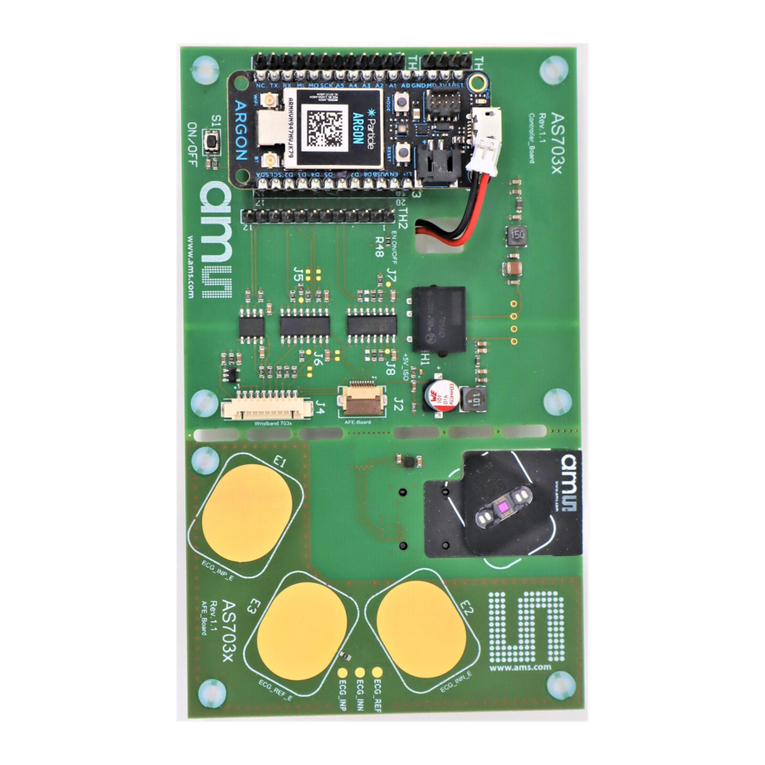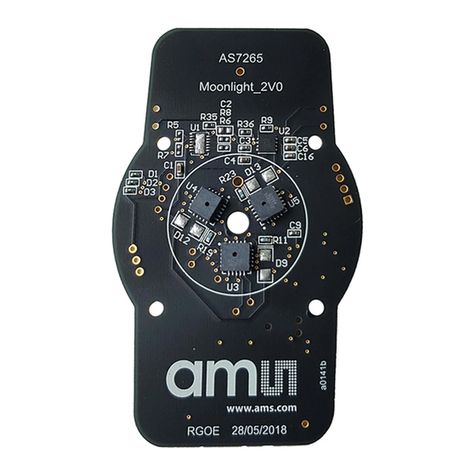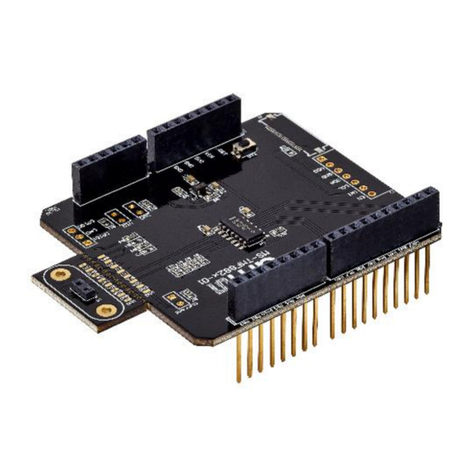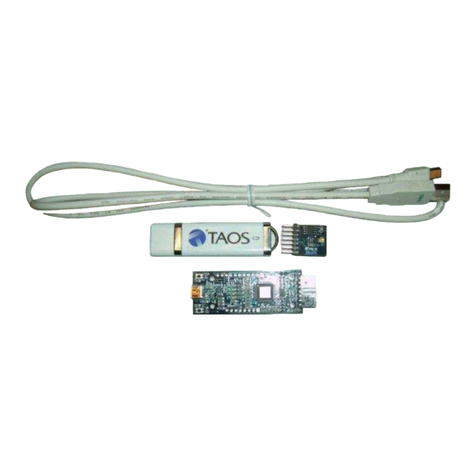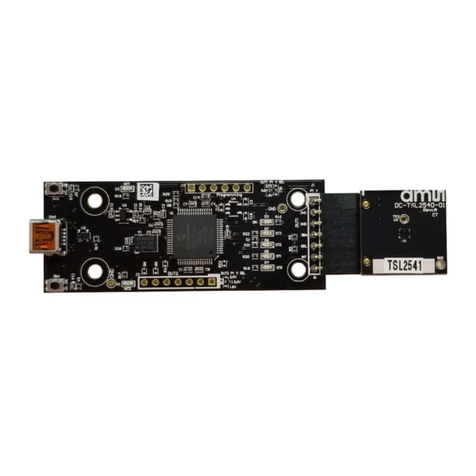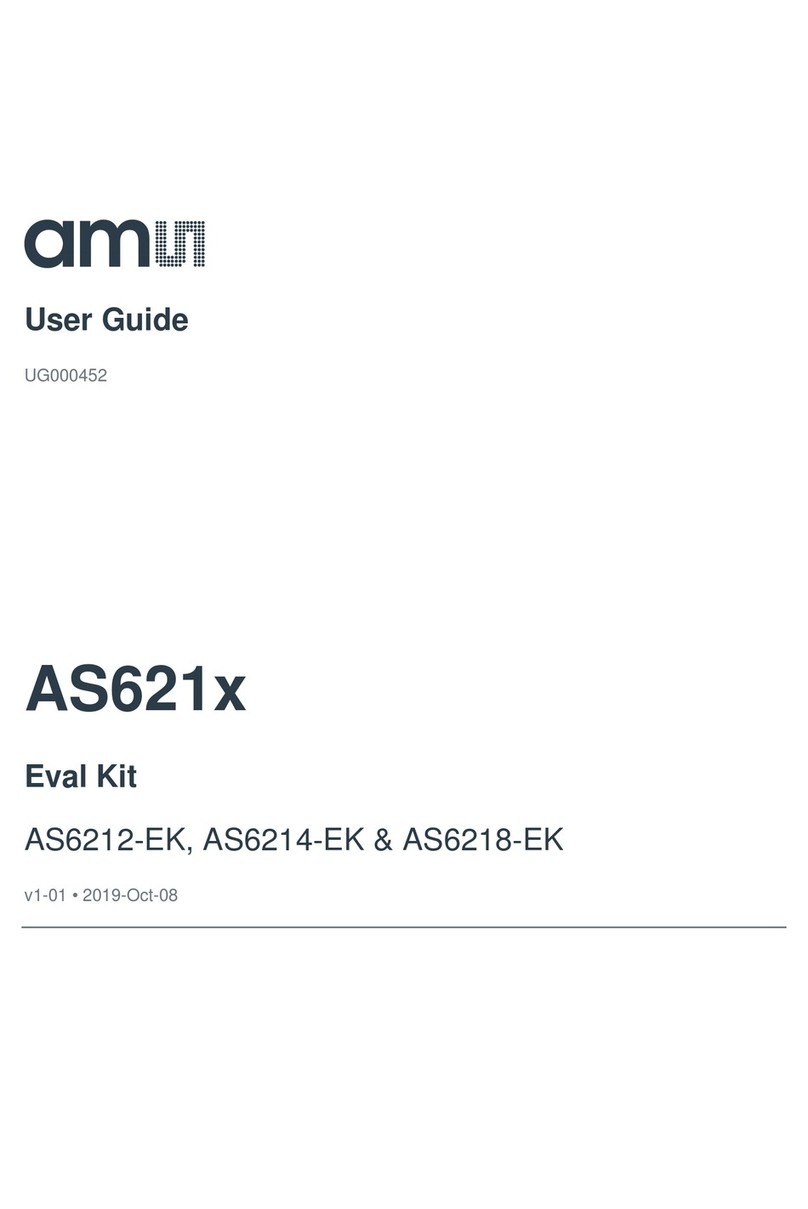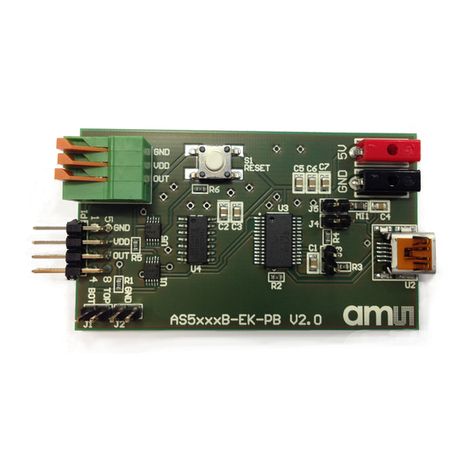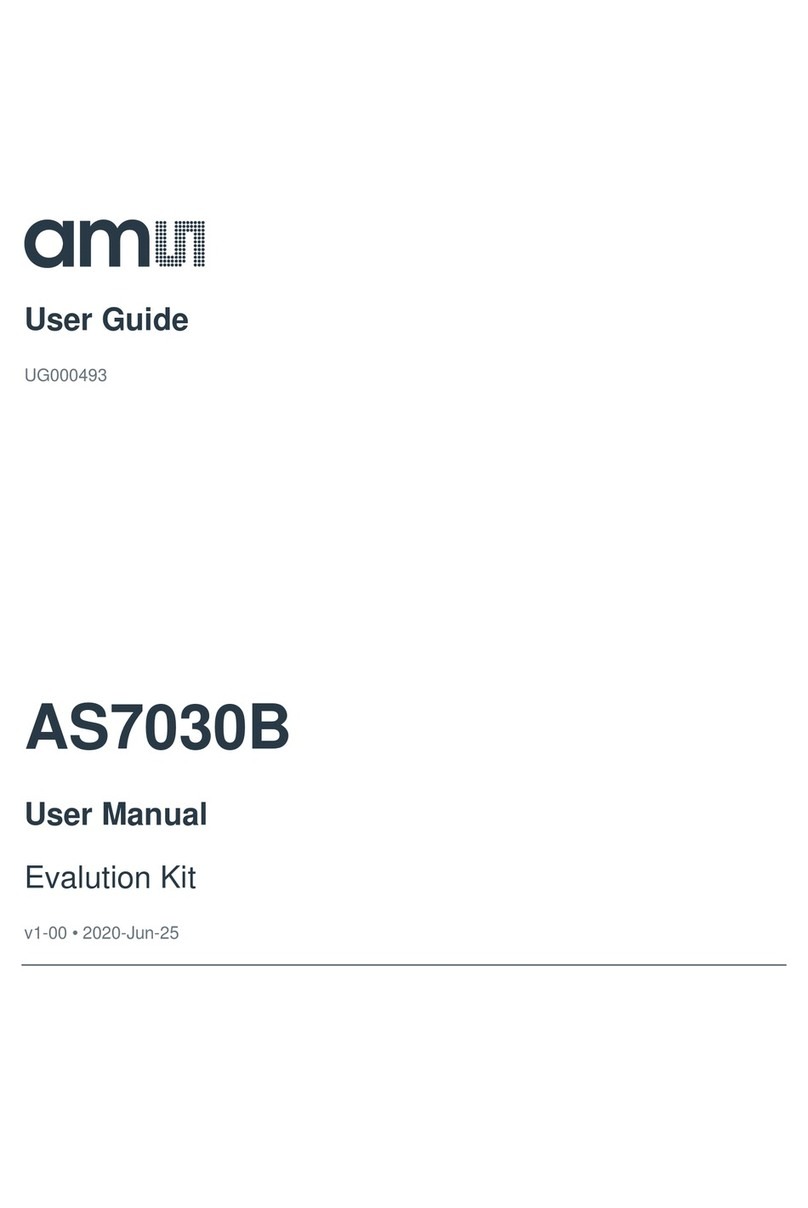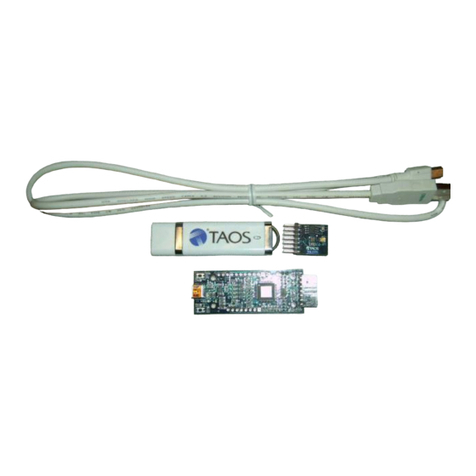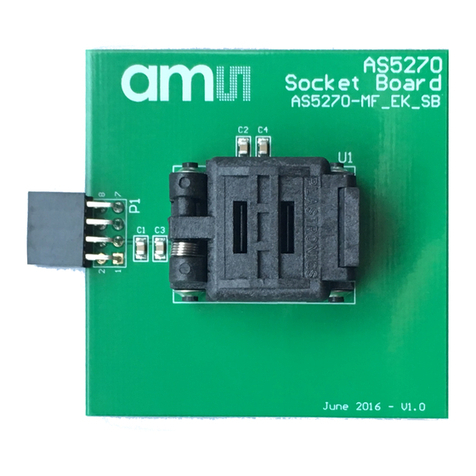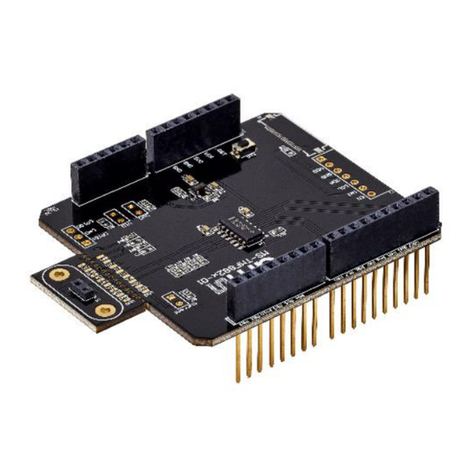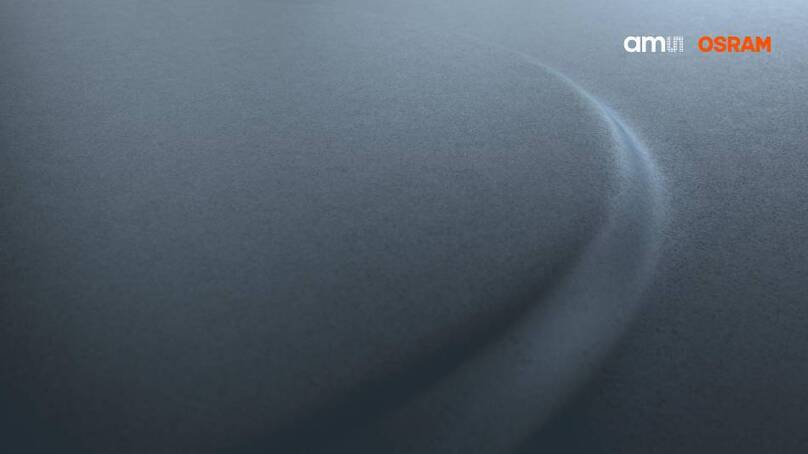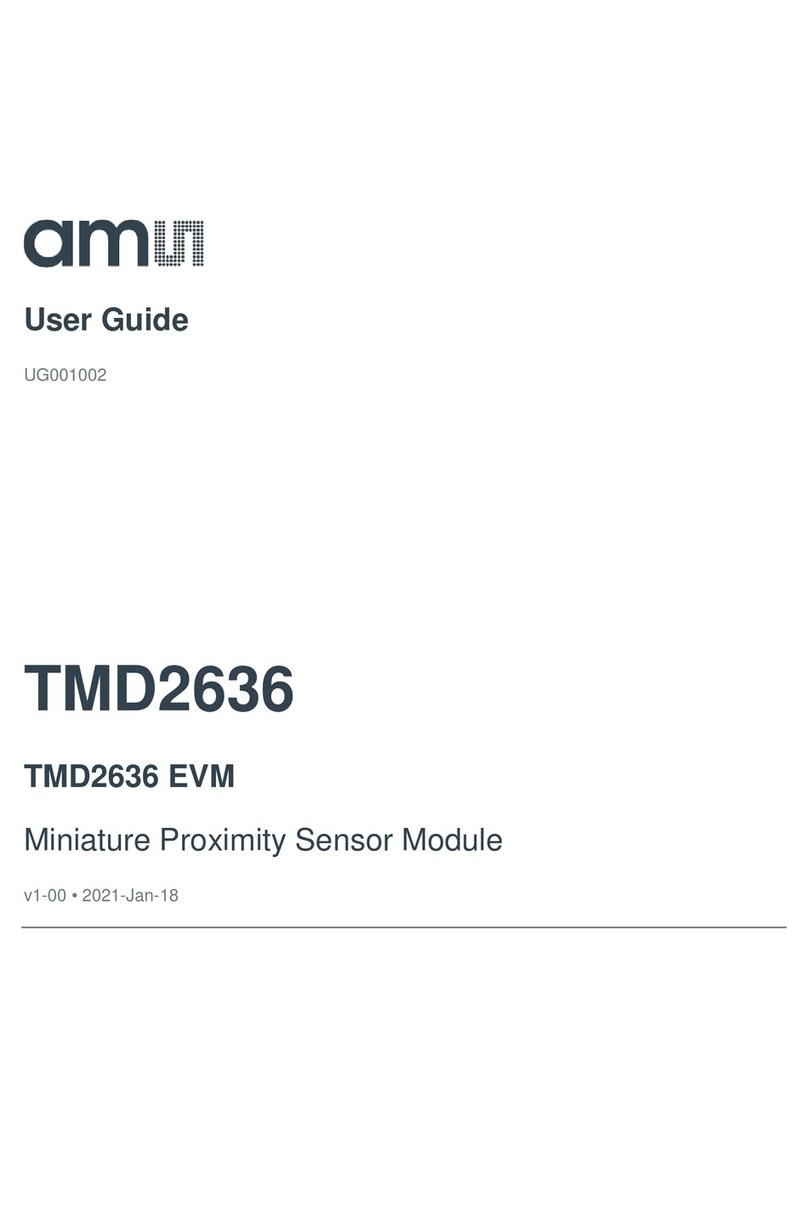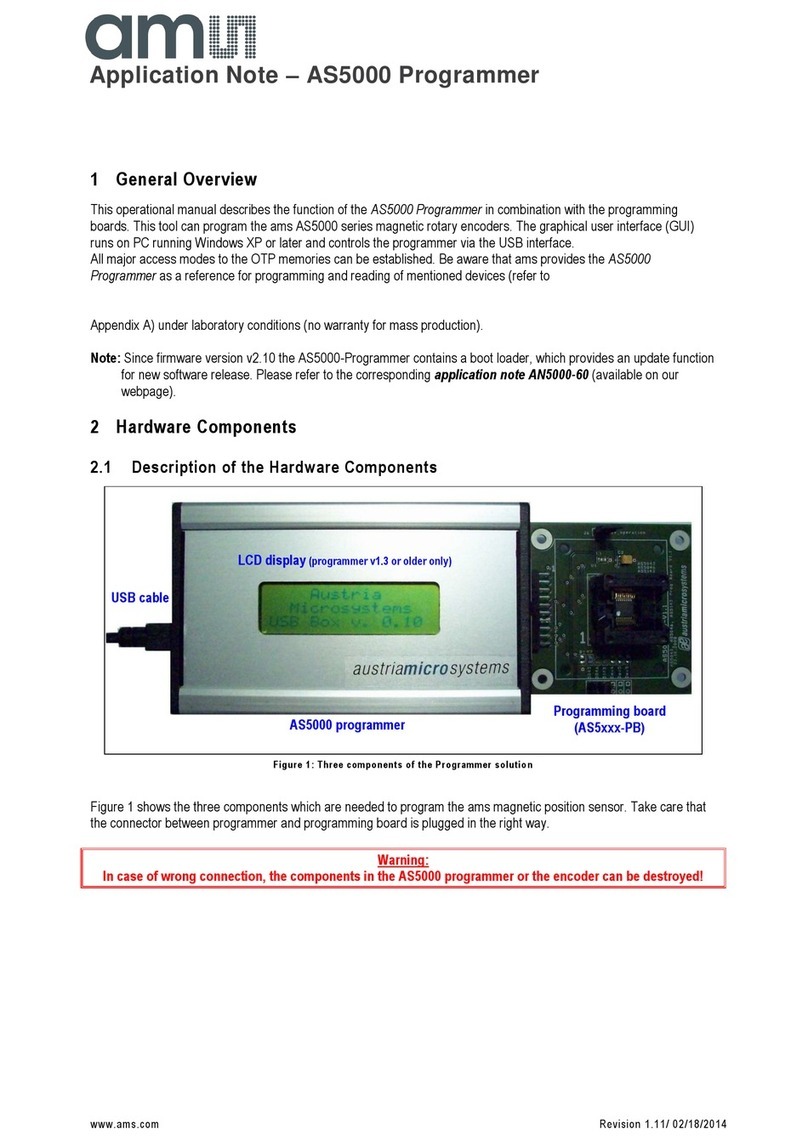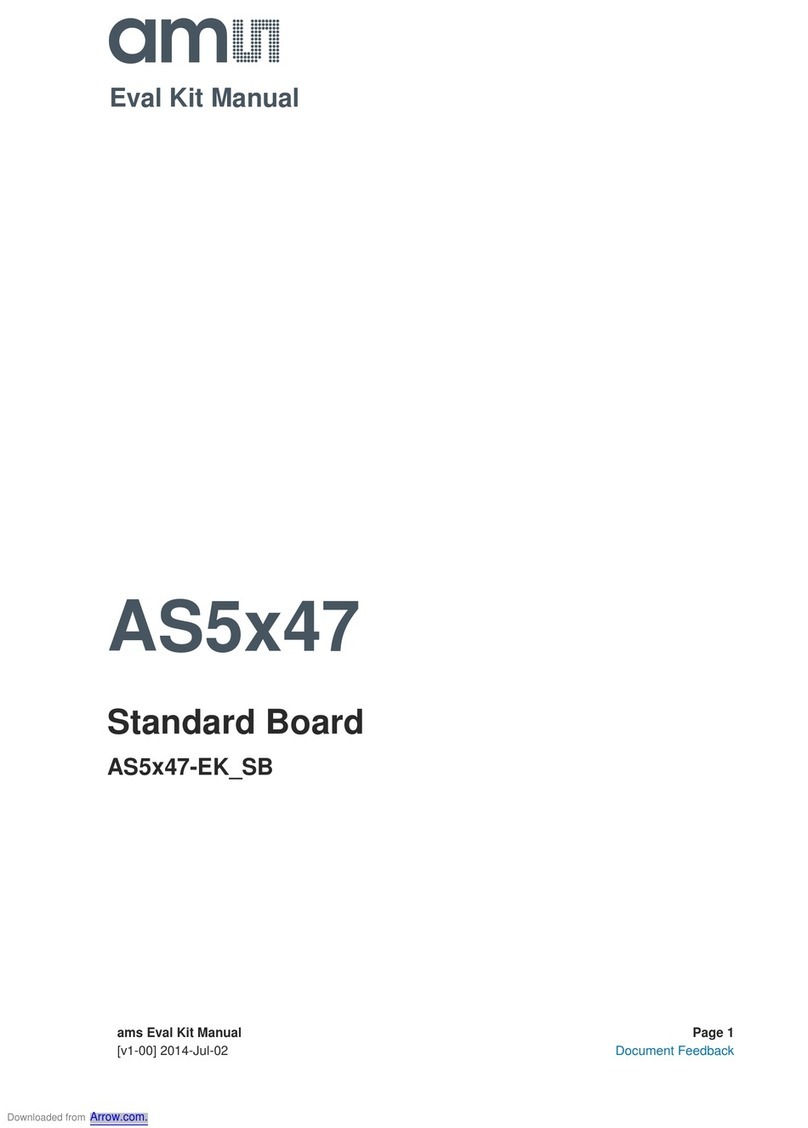
AS3930 Standard Board
ams Demo Kit Manual, Confidential
Table of Contents
1Introduction .......................................................................................................................... 4
1.1 Kit Content ........................................................................................................................... 4
2Getting Started..................................................................................................................... 4
3Hardware Description........................................................................................................... 5
3.1 AS3930 Demoboard Description ......................................................................................... 5
3.2 125 kHz Wakeup Transmitter Board.................................................................................... 6
4Software Description............................................................................................................ 7
4.1 Install the GUI ...................................................................................................................... 7
4.2 Description of the GUI of the Receiver ................................................................................ 8
4.2.1 Settings Description............................................................................................................. 9
4.2.1.1 Low Power Mode ................................................................................................................. 9
4.2.1.2 Clock Generator................................................................................................................... 9
4.2.1.3 Calibrate RC Oscillator ........................................................................................................ 9
4.2.1.4 Antenna Damper.................................................................................................................. 9
4.2.1.5 Gain Reduction .................................................................................................................... 9
4.2.1.6 Automatic Time-Out............................................................................................................. 9
4.2.1.7 Envelope Detector Time Constant....................................................................................... 9
4.2.1.8 Data Slicer............................................................................................................................ 9
4.2.1.9 Comparator Hysteresis ......................................................................................................10
4.2.1.10 Frequency Detection Tolerance.........................................................................................10
4.2.1.11 Wakeup Pattern (Manchester)........................................................................................... 10
4.2.1.12 General Settings ................................................................................................................ 10
4.2.1.13 Correlator ...........................................................................................................................10
4.2.1.14 Symbol Rate....................................................................................................................... 10
4.2.1.15 Artificial Wakeup ................................................................................................................ 10
4.2.1.16 Clear Wake ........................................................................................................................ 10
4.2.1.17 Reset RSSI ........................................................................................................................ 10
4.3 Clear False Wakeup........................................................................................................... 11
4.4 Description of the GUI for the Wake-up Transmitter Board............................................... 11
4.4.1 Settings Description...........................................................................................................11
4.4.1.1 Duration of Carrier Burst....................................................................................................11
4.4.1.2 Number of Preamble Symbols........................................................................................... 12
4.4.1.3 Symbol Rate....................................................................................................................... 12
4.4.1.4 Enable Buzzer....................................................................................................................12

